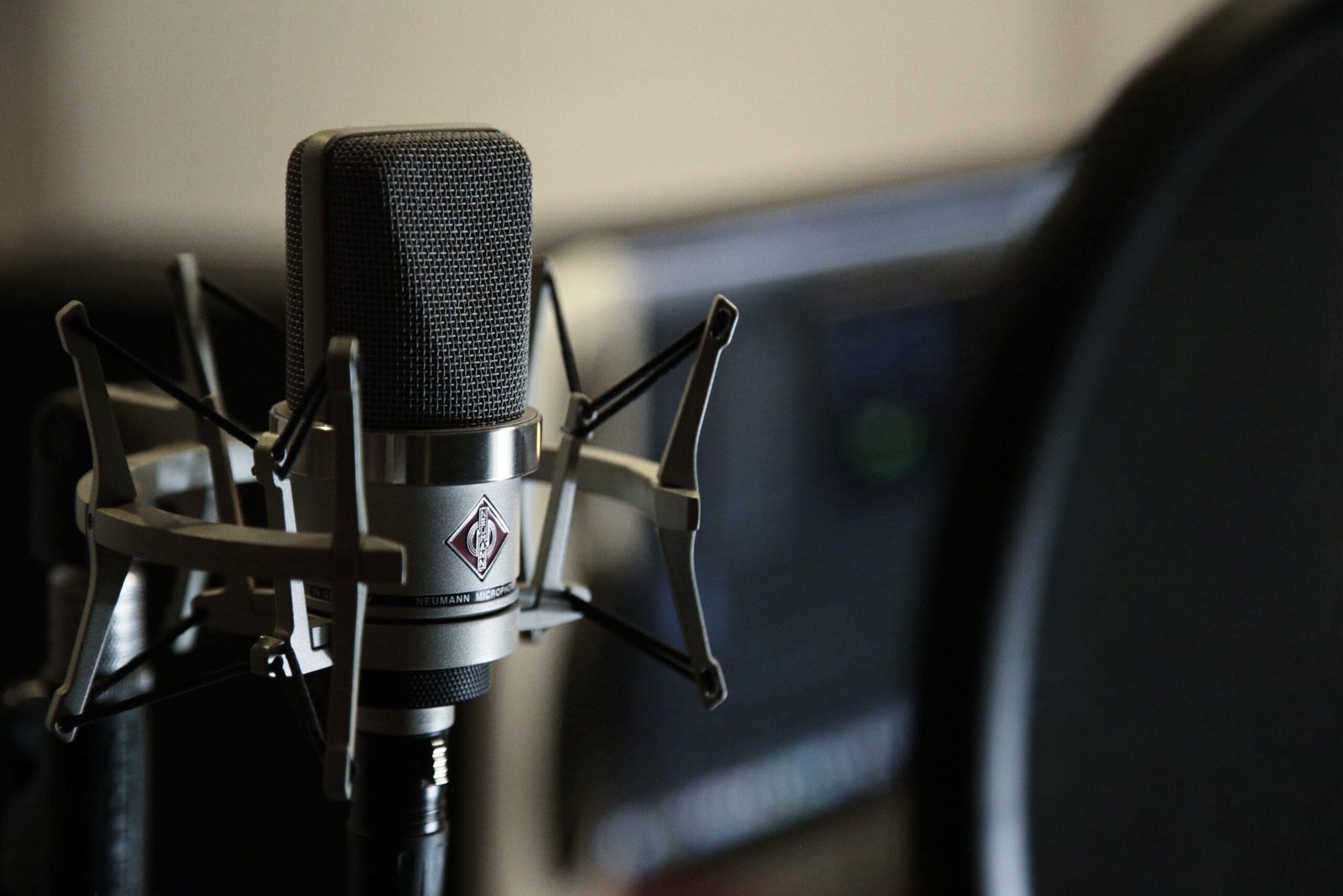Microphones are a big world without limits… Here’s a simple explanation of all types of microphones to find out which one is right for you

Microphones are a big world without limits… Here’s a simple explanation of all types of microphones to find out which one is right for you

Microphones receive the least attention when building an audio system for most average users, and some music producers and audiophiles are unaware of the fundamental differences between different microphones.
The notion “more expensive microphone means better sound resolution” is in many people’s minds! Of course, there is some truth to this idea, but it doesn’t tell the whole story. The right microphone that suits you varies depending on where you are, depending on how you use it, depending on what field you use it for…
If you are in a place with a lot of distractions and noise, for example, and you like to record music, a dynamic microphone is best for you in this regard, but if you are a gaming enthusiast and always record on Twitch, for example, a condenser microphone like Audio mic Technica AT2020i is definitely better. Would you believe that the position of the microphone during recording affects the quality of the sound produced?!
In today’s article, we will delve into the world of microphones and explain the technical and artistic aspects and the differences between microphones and where they are used, so that the optimal choice of a microphone is based on a technical basis completely free of nonsense Of course, the world of microphones cannot be summarized in one article, but At the beginning we will try to explain most of the concepts that interest you as an amateur.
What is the polarity of the microphone?
Which are known in English as “Polar Patterns” and are also known as microphone directions.
One of the myths around the world is that the microphone perfectly picks up sound from above, and if it is shaped like a sphere, the sound comes from all sides of the sphere! Of course, this idea is completely wrong.
Microphones have different polar characteristics, which in turn describe how the microphone picks up sound, indicating how the microphone “hears” the sound and which parts are closed and which are open. A little knowledge of these patterns can help you choose a microphone that picks up the sound you want while avoiding as much interference or side noise as possible.
The microphone pole pattern is divided into several parts, including:
Cardioid microphone
This microphone picks up all sounds in front, ignoring background noise. This front focus will allow you to point the microphone at the desired sound source and isolate it from all surrounding sounds, making it particularly suitable for live recordings where most of the background noise is unnecessary.
This type of microphone is considered the most common and is widely used in live performances as it can be found at karaoke or large events, and is also often used when recording loud music such as guitar music.
The location of the microphone is important here as it distorts the background sound and therefore needs to be tuned to the source to be recorded.
Mikrofon Hyper Cardioid
Cardioid microphones work very similarly, but have lower sensitivity compared to cardioid, resulting in greater isolation and immunity to background noise. loud parties or in noise-free recording rooms.
Omnidirectional microphone
These are microphones that, due to their non-directional design, pick up sound from all directions, but as a result pick up subtle nuances in the sound, resulting in a more natural, lively sound. These microphones can be used in recording studios or in houses of worship, as well as for recording songs on live performances at low noise levels or in cases where sound is being recorded in front of a large number of people.
One of its obvious drawbacks is its lack of background noise immunity, which makes it a poor choice in places with background noise.
Figure-of-eight microphone (Figure 8)
The name of this category of microphones comes from their shape, which resembles an English figure eight (8). considered mono mics, but with noise suppression on both sides, making this mic’s front and back sensitivity a good choice for stereo recording or recording more than two instruments simultaneously.
Pistol microphone
Also called line mics, they are more directional than overcardioid mics, providing a large pick-up range as well as good emphasis on sound from the front. They are widely used in film and stage recordings, and are also an excellent choice for vocal groups.
Multi-Pola Microphone
It is a microphone that can switch between different polar characteristics, making it a versatile microphone and its uses. Many modern USB condenser microphones have this feature, some of which allow you to switch between polar characteristics by simply pressing a button, and others to change microphone heads.
The advantages offered by this microphone are obvious, namely more places to place and more uses, just remember that you have to be careful when dealing with this type of microphone because you don’t want to damage the parts. what makes it stand out from the rest!
Tip : if the microphone is covered, it will cause significant distortion of the sound, do not cover the microphone head with your hand!
Many performers accidentally cover their microphone heads when performing certain moves on stage, but these moves have a significant negative impact.
If the closed mic is cardioid, for example, it will turn into a monaural mic and will pick up more sound than the surrounding speakers, causing a lot of echo, and that is obviously bad!
Membrane Size_ _
The microphone picks up sound with a certain aperture. This diaphragm is made of a thin material that vibrates when sound hits it. This vibration converts sound energy into electrical energy. There is no actual measurement standard, but there are currently three main types of diaphragm microphones, all of which refer to the mass diaphragm. The size of the aperture affects microphone sensitivity, range, and many other factors.
Microphones are divided into:
Microphone with a small diaphragm
Small diaphragm microphones are often called feather mics due to their small, cylindrical shape.
The compact cylindrical shape makes it lighter and easier to carry than other microphones, plus it is more stable and rigid to withstand high sound pressure. Can be used to record guitar sounds.
The disadvantage of this type of microphone is its low acoustic sensitivity.
Large diaphragm microphone
The larger the aperture, the more air vibrations the microphone can pick up, and the more vibrations it picks up, the more vocal detail it captures.
Unlike small diaphragm microphones, large diaphragm microphones are easily moved around, allowing them to pick up different sound pressures, resulting in a clearer and more natural sound.
This mic feature makes it a must-have mic in the recording studio, you can use it to record just about anything…anything!
Be sure to pay attention to the pitch as it can damage the sound if the pressure is high.
Medium diaphragm microphone
Sometimes medium diaphragm microphones are called hybrid microphones because they combine the characteristics of small and large diaphragm microphones; These microphones often incorporate the warm and clear sound of large-diaphragm microphones while retaining the high-frequency sound of small-diaphragm microphones.
These are newer mics that are gaining a good reputation among recording stations, but you can basically avoid these types of mics if you’re just building a home studio, and especially if you have one of the earlier ones.
Three types of microphones are used to record music
We will now talk about three types of microphones that are popular in the field of music recording with USB or XLR connectivity.
Dynamic Microphone_ _
If you’re looking for a reliable and versatile microphone, you should start with a dynamic microphone.
This microphone has a magnetic coil diaphragm, so it is guaranteed to pick up sound even at high voice pressure, so you can use it to record loud sounds such as electronic guitars or drums without worrying about distortion or sound damage.
This microphone is not only designed for high-pressure voices, but also works well for low-pitched voices.
Condenser microphone_ _
Condenser microphones contain a thin conductive diaphragm placed under a metal part. This diaphragm acts as a capacitor, converting the colliding air vibrations into an audio signal. The way this microphone works is different from others. The function of the diaphragm as a condenser results in a significant increase in the accuracy and quality of the sound produced, making this microphone ideal for recording studios.
Keep in mind that this method of capturing audio requires a lot of power, so you only need an electronic mixer or phantom power supply, unless, of course, the battery is connected.
No matter what kind of music you’re trying to record, condenser microphones will work as long as the sound pressure isn’t too high. Just remember to handle them with care as they are not as stiff as dynamic mics.
pita microphone _

Although this microphone is not as popular as the previous one, it was, especially in the field of radio recording. The thin metal strips used in these microphones allow them to pick up not only air movement but also speed, leading to greater sensitivity to high frequencies and good treble pickup.
Recently, there has been a resurgence in these types of microphones, mainly because the new versions are more stable and reliable than their old microphones, making them useful for recording multiple instruments in places where noise levels are reasonable. looking for an old acoustic twist to your music, or use it with dynamic and condenser microphones for a more realistic sound.
Wired and wireless microphones
When comparing wired versus wireless microphones, opinions vary, some insisting wireless microphones are better and others the opposite, but what is the truth?
In fact, comparing them is like, for example, comparing an Android phone and an iPhone… After all, both have their advantages and characteristics, and it is your personal preferences that will determine which one is best for you.
Wireless microphones have transducers that convert sound energy into electrical energy, in many cases similar to their wired counterparts… For example, you can buy a wired or wireless microphone with a Shure SM58 transducer, even if it’s a little old, the difference will be in the signal path from the transformer to the next transformer.
With wired mics, you have various “preamps” – the part that converts the signal from the (very low) level of the mic to the production level – ranging from a few dollars to thousands of dollars. microphone, must have a built-in microphone section, and therefore your options are very limited.
In addition, wireless microphones can transmit signals over long distances depending on the technology used when transmitting, if they transmit as analog signals, they may be susceptible to interference that distorts the sound, but if they transmit as digital signals, the signal is either present or absent Of course, because the signals digital have only two values, namely zero or one, but converting a digital signal causes undesirable delays, so if you’re speaking directly to the audience you obviously don’t want any speech delays!
In general, choosing the best microphone for you is a combination of a set of characteristics that you think suit you and choosing the right microphone based on that, so choose the right microphone and we’ll wait for you to mention it to us in the comments box.




2 Comments